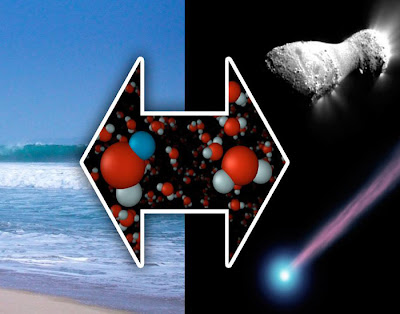Astronomers have found a new cosmic source for the same kind of water that appeared on Earth billions of years ago and created the oceans. The findings may help explain how Earth's surface ended up covered in water.
New measurements from the Herschel Space Observatory show that comet Hartley 2, which comes from the distant Kuiper Belt, contains water with the same chemical signature as Earth's oceans. This remote region of the solar system, some 30 to 50 times as far away as the distance between Earth and the sun, is home to icy, rocky bodies including Pluto, other dwarf planets and innumerable comets.
"Our results with Herschel suggest that comets could have played a major role in bringing vast amounts of water to an early Earth," said Dariusz Lis, senior research associate in physics at the California Institute of Technology in Pasadena and co-author of a new paper in the journal Nature, published online today, Oct. 5. "This finding substantially expands the reservoir of Earth ocean-like water in the solar system to now include icy bodies originating in the Kuiper Belt.

No comments:
Post a Comment